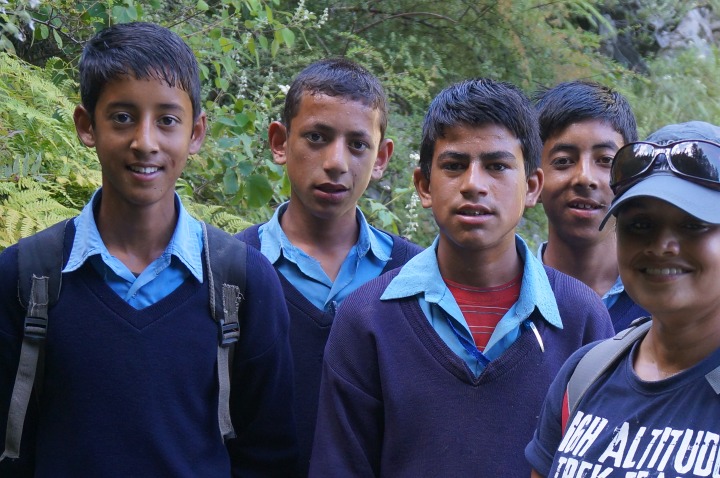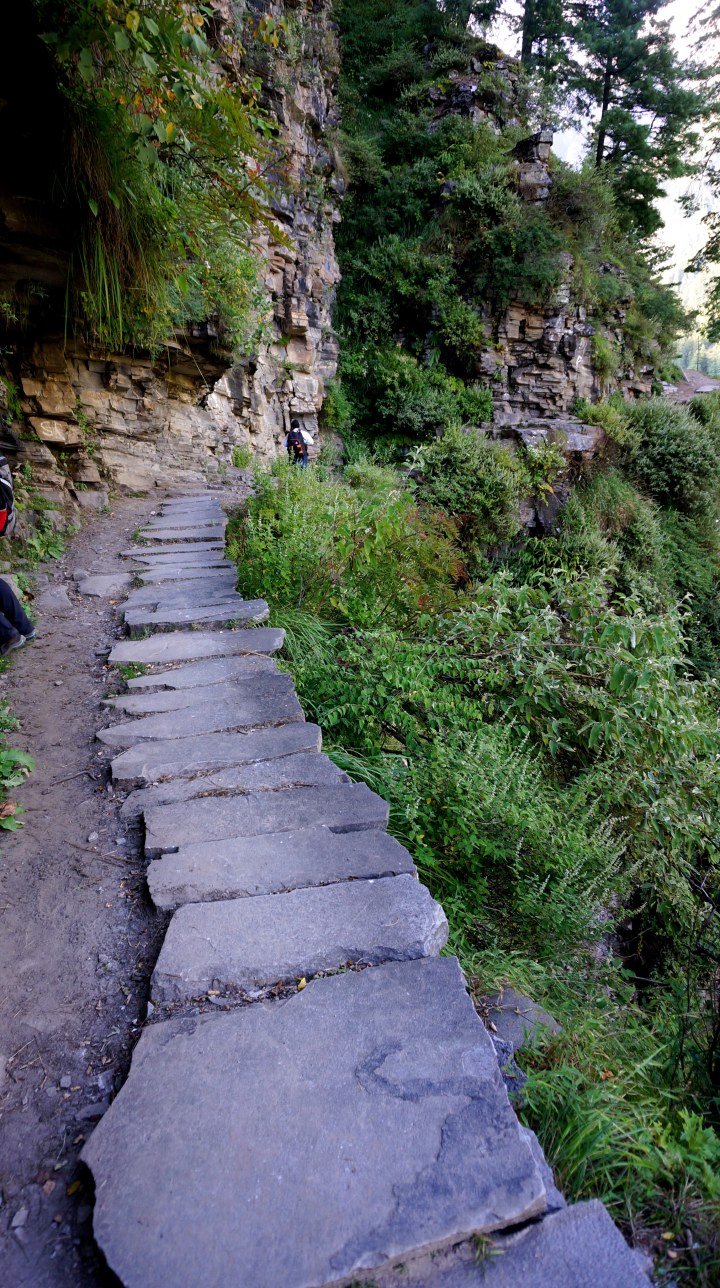
According to NCERT (National Council for Educational Research and Training) in 1987, about 94% of the rural population of India was ‘served’ by the primary school within 1km, better still 85% had a middle school within 3kms.
Sounds ok, right? Wait until you see the terrain. What experts consider ‘walking distance’ ignores the hardship it takes to reach the schools. Recently, I came across an opportunity to interact with students of such school. The distance between their village to the school is not more than 4-5kms. it takes about say an hour to reach the school, and back home the time extends for almost an hour and a half. So approximately 2 hours and half an hour of commuting.
Now considering these students are not residing in urban areas, so minus travel infrastructure, subtract accompaniment of known or unknown seniors and also access to mushroomed medication clinics.
The terrain took us (non-localites) almost 3 hours one way, the road was not just kaccha (not built), but also average just 2-3 feet wide. While one side was covered with cut mountains and sharp rocks, the other side was laced with an open valley. at the bottom of the valley, there flown a river bouncing noisily on the rocks.
No matter how many newspaper, magazine articles you may read, you will never feel the ultimate truth, unless you visit one of these students. The school in this post is in Himachal Pradesh, the town is called Sewa.
Sewa being the last town with any civilized amenities, the only school and post are stationed here. the school provides education till 12th standard post which many find their way to bigger towns in Himachal Pradesh or support family run apple growing business.
Although for these boys trekkers laden with heavy backpacks is not a strange scene, after all, Sewa to Jhanka is a key route to Rupin pass.
These school Boys in the red sweater and blue trousers and girls in blue skirt and red sweater travel every day to school from this route, in groups, sometimes with siblings sometimes with classmates. Sometimes guide strangers sometimes change marked arrows and have a hearty laugh at over smart urbanites. I have been told that parents or relatives are not welcomed on this route. Peers make fun of those who gets accompanied by elderly.
It is a Govt school, many times one teacher teaches for combined grades. Sometimes teachers get bored and leave the place in the middle of the semester. But for these students school is a place to learn, make friends and play games, just like students in a plush convent at metros.

I met many students who were turning red due to harsh sun, racing on those difficult mountains, resting on big rocks and taking sips from small plastic bottles or streams, with twinkling eyes and eagerness to share.
When I told them where I am from, I mistakenly presumed they will ask me abt Bollywood stars, but they didn’t. One bright kid just said, “I would like to come to Mumbai because I like the sea and I want to become rich and build a proper road here so that no wild animal can ever prey on young ones after dark.”
It is indeed appreciative how the Govt is providing education but let’s not go by km next time. Terrain matters too.
Thanks for taking us there and making us understand the true value of education. wait to read more of your travel experience.
LikeLike
Truely insightful.. One has to really step in their shoes to know the hardships!
Looking forward to more👍🏻
LikeLike
most of those who have access to easy education don’t value it and those who don’t can’t refrain from thanking it .. Such is the truth !!
LikeLike